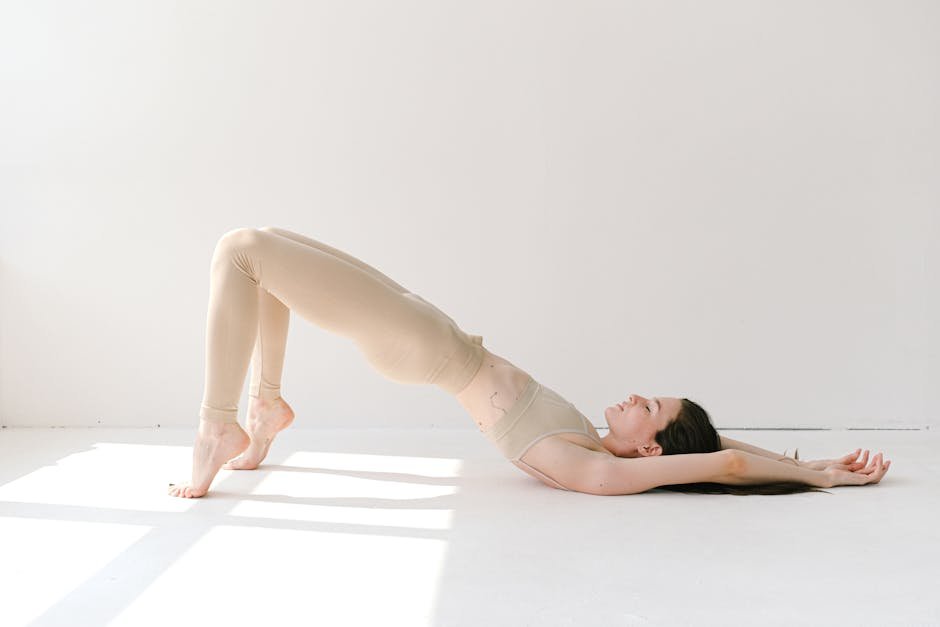5 Therapeutic Yoga Poses for Stress Relief and Inner Peace
Introduction to Therapeutic Yoga
Therapeutic yoga focuses on using yoga poses to help with physical and emotional well-being. It combines breathing techniques, meditation, and gentle movements to promote relaxation and reduce stress. Therapeutic yoga differs from traditional yoga as it is tailored to address specific health issues or concerns. By practicing therapeutic yoga, individuals can experience relief from stress, anxiety, and physical discomfort.
Understanding Stress and its Impact
Stress is a natural reaction in the body when facing challenges. It can affect your physical and mental health, leading to issues like anxiety and sleep disturbances. Recent studies have shown that stress can weaken the immune system, making us more susceptible to illnesses. Practicing therapeutic yoga poses can help reduce stress levels and promote inner peace by calming the mind and relaxing the body. By understanding the impact of stress on our well-being, we can take steps to manage it effectively through practices like yoga.
Benefits of Therapeutic Yoga for Stress Relief
Therapeutic yoga can be a helpful way to relieve stress and find inner peace. Some benefits of practicing therapeutic yoga for stress relief include:
Promotes relaxation and calmness
Reduces anxiety and tension
Improves emotional well-being
Enhances mindfulness and self-awareness
Helps release physical tension in the body
Five Yoga Poses for Inner Peace
These five yoga poses are simple yet effective in helping you find inner peace. Child’s Pose is calming and relieves tension in the back, neck, and shoulders. Corpse Pose promotes relaxation and helps reduce anxiety. Cat-Cow Stretch increases spinal flexibility and brings focus to your breath. Seated Forward Bend calms the mind and stretches the spine. Legs Up the Wall Pose reduces stress and improves circulation. Incorporate these poses into your routine for a peaceful and centered mind.
Pose 1: Child's Pose (Balasana)
To practice Child's Pose, start by kneeling on the floor, then sit back on your heels and lower your forehead to the ground with your arms stretched out in front of you. This relaxing pose stretches your back, hips, and thighs, promoting a sense of calmness and inner peace. Stay in this position for a few breaths, focusing on deep breathing to release tension and stress from your body. Child's Pose is great for relieving anxiety and helping you reconnect with your inner self.
Pose 2: Cat-Cow Stretch (Marjaryasana-Bitilasana)
As you move into the Cat-Cow Stretch, focus on connecting your breath with movement. Begin by arching your back like a cat, then transition into a cow-like position by dropping your belly towards the mat. This pose helps to improve flexibility in your spine and can also help to relieve stress and tension in your back. Remember to move slowly and mindfully, syncing your breath with the motion to enhance the benefits of this stretch.
Pose 3: Legs Up the Wall (Viparita Karani)
Legs Up the Wall, also known as Viparita Karani, is a relaxing yoga pose that involves laying on your back with your legs extended up against a wall. This pose promotes relaxation by encouraging blood flow back to the heart and calming the nervous system. The gentle inversion also helps to reduce stress, relieve tired legs, and can aid in better sleep. Practice this pose for about 5 to 15 minutes to experience its calming effects.
Pose 4: Corpse Pose (Savasana)
Corpse Pose, also known as Savasana, is a relaxation pose that promotes deep rest and relaxation. It involves lying flat on your back, arms relaxed by your sides with palms facing up, and legs comfortably apart. This pose allows your body to rest and rejuvenate, calming the mind and reducing stress. To practice Savasana effectively, focus on your breath, letting go of any tension in your body, and allowing your mind to be at peace. This pose is perfect for winding down after a yoga session or when you need a moment of tranquility in your day.
Pose 5: Forward Fold (Uttanasana)
Forward Fold, also known as Uttanasana, is a relaxing yoga pose that helps stretch the hamstrings and lower back. To perform this pose, stand tall and fold forward from the hips, keeping your spine long and your knees slightly bent. You can let your arms hang freely or grab opposite elbows for a deeper stretch. Forward Fold is excellent for calming the mind and relieving stress by releasing tension in the back and shoulders.
Conclusion and Tips for Regular Practice
For a successful yoga practice, consistency is key. Aim to include these therapeutic poses in your routine at least three times a week to experience the full benefits. Remember to focus on your breath throughout each pose, allowing it to guide your movements and deepen your stretches. Find a quiet and comfortable space where you can fully relax and connect with your inner self. Additionally, it's essential to listen to your body and make modifications as needed to avoid injury. And most importantly, approach your practice with an open mind and a willingness to explore and grow on your journey to inner peace.

